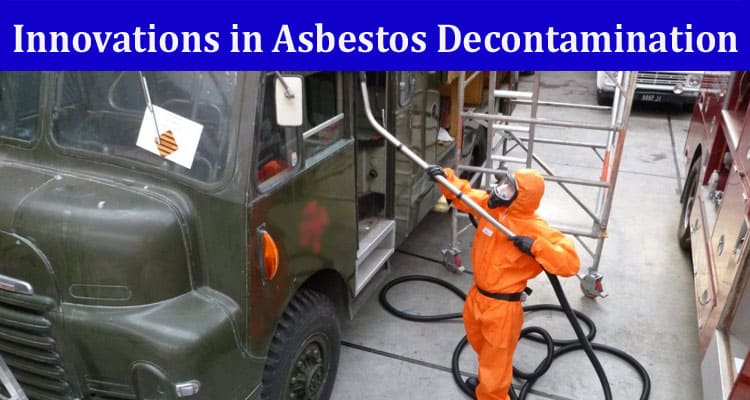Asbestos, once celebrated for its fire-resistant properties and versatility, has proven to be a silent killer lurking within your built environment. The mineral’s harmful health effects, including lung diseases and cancer, have led to a global push for asbestos removal and decontamination. Traditional methods have been effective, but they often come with environmental and human health risks. Fortunately, innovations in Asbestos Decontamination are on the horizon, offering safer and more efficient solutions for addressing this hazardous material. This article will explore future technologies that promise to revolutionise asbestos remediation.
1. Robotics and Automation
Robotic technology is poised to play a significant role in the future of asbestos abatement. Remote-controlled robots equipped with specialised tools can navigate hazardous environments, such as asbestos-contaminated sites, without endangering human workers. These robots are capable of precision tasks, such as asbestos removal and cleanup, while operators control them from a safe distance.
A notable example is the development of robotic arms with advanced sensors and cameras, enabling operators to assess and remove asbestos materials with unparalleled accuracy. These robots can access tight spaces, minimising the need for extensive demolitions that generate additional waste and increase the risk of fibre release.
2. Nanotechnology Solutions
Nanotechnology offers a promising avenue for addressing asbestos contamination on a microscopic level. Researchers are exploring the use of nanoparticles that can bind to asbestos fibres, rendering them less harmful and easier to remove. These nanoparticles could be sprayed onto contaminated surfaces or mixed into materials containing asbestos to mitigate the release of fibres.
Furthermore, nanoscale materials are being designed to break down asbestos fibres into harmless components, reducing their toxicity. This innovative approach has the potential to transform asbestos remediation into a safer and more sustainable process.
3. Chemical and Biological Remediation
Chemical and biological methods are also gaining traction in the field of asbestos abatement. Enzymes and microorganisms are being investigated for their ability to break down asbestos fibres or convert them into less harmful forms. This approach harnesses the power of nature to accelerate the degradation of asbestos, turning it into a less hazardous substance.
Additionally, researchers are exploring chemical solutions that can neutralise asbestos fibres, reducing their toxic effects. These advancements could lead to more environmentally friendly and effective decontamination processes.
4. Aerogel Technology
Aerogels, ultralight materials with high porosity, have shown promise in capturing and containing asbestos fibres. Researchers are developing aerogel-based products that can be applied to surfaces contaminated with asbestos. These aerogels act as sponge-like materials, trapping asbestos fibres and preventing their release into the air.
Aerogel technology not only aids in asbestos containment but also provides an insulation layer that contributes to energy efficiency. This dual-function approach showcases the potential of innovative materials in redefining asbestos abatement strategies.
5. Plasma Technology
Plasma technology, which involves the ionisation of gases to create a high-energy environment, has emerged as a potential solution for asbestos remediation. Plasma systems can be utilised to break down asbestos fibres at the molecular level, rendering them harmless. This method not only addresses the immediate threat of asbestos contamination but also minimises the long-term environmental impact by converting asbestos into safer substances.
As the world confronts the pressing need to address asbestos contamination, innovations in Asbestos Decontamination technologies offer hope for a safer and more sustainable future. From robotic systems and nanotechnology solutions to chemical remediation and aerogel applications, these advancements hold the potential to transform the way you approach asbestos-related challenges. By harnessing the power of science, engineering, and innovation, you can work towards a world where asbestos is no longer a looming threat but a hazard successfully mitigated through cutting-edge technologies.


